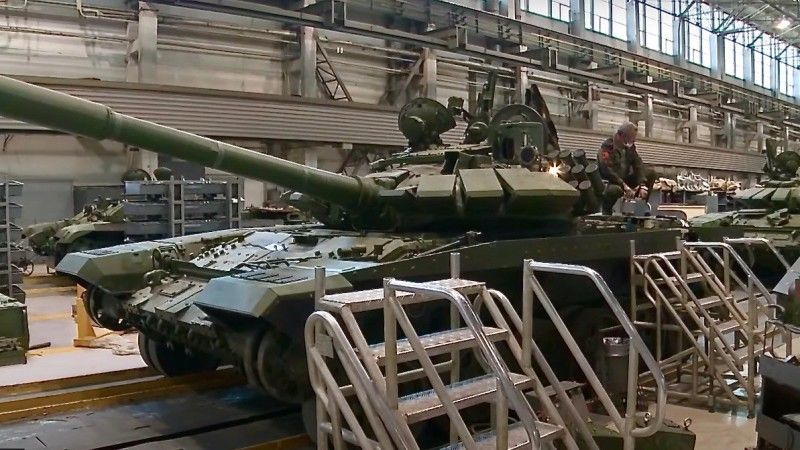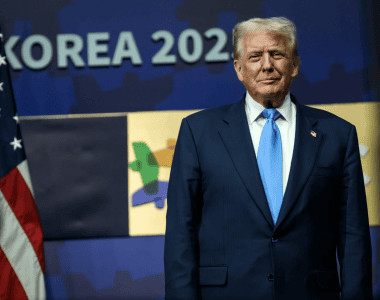Russia to Recover from the War Losses Through Mobilization of Industry and Gradual Increase of Defence Spending?

Ukrainian GUR military intelligence service announced that Russia is planning to increase its modernization expenditure by an amount of USD 10 bn., by the end of 2022. This, along with the industrial mobilization, would support Russia’s offensive effort in Ukraine.
As the GUR's release states, limitations or complete exclusion, when it comes to PTO, have been introduced at the facilities owned by the Russian defence industry giant, Rostec. The new rules pertain to all of the management, but also, some, or, in some facilities - all, employees working in the manufacturing divisions.
This is supposedly an element of a secret mobilization of the Russian economy, launched to support the war effort in Ukraine more efficiently. Some time ago Russia has introduced regulations that form a legal foundation for actions as such. When it comes to management, control of movement has also been imposed. Some of Rostec's higher management members have been accused of treason.
The Ukrainian intelligence also suggests that Russia is about to approve a change of the national arms programme in 2022. The financing is to be increased from RUB 600 billion to 700 billion (USD 9.5-11 bn.). This is a lot, because throughout the year 2021, the whole Russian military budget, including salaries, amounted to RUB 4855 billion, as per the data released by the SIPRI institute based in Stockholm. Ultimately, the final decisions would be made in September.
Estimating the capacity of the Russian industry based on the data available in open sources may be risky by default, given the high levels of confidentiality, and possible disinformation being spread by the Russians. Despite the above, one may attempt to assess the general trends. Procurement expenditure increase of such magnitude, along with a mobilized economy both mean that Moscow is willing to recover from the major losses incurred in Ukraine.
The Russian industry is also suffering from the western sanctions that have put a stop to the delivery of advanced components of PGMs or optoelectronics. On the other hand, one shall remember that Russia may be eager to utilize commercial-grade electronics for defence purposes. Even when these are subjected to sanctions, attempts may be made to procure them illegally, for instance via the civil market in China or India. The said components may also be acquired from nations not willing to participate in the imposition of sanctions.
Even though these restrictions are required, they no longer are an impermeable barrier to the acquisition of high tech - the modern technologies are far more common than during the Cold War, also outside the western marketplace. Here one could refer to Iran which, despite being subjected to sanctions, manufactures its cruise missiles, air defence systems, or UAVs - the latter have been procured by Russia. Weapons as such may not be reliable, and as effective as the latest systems manufactured by the US, or by western manufacturers. But this does not mean that they would lack lethality if used in mass quantities.
Russia also has a major stockpile of post-Soviet weapons. The industry may overhaul that inventory and send it to Ukraine - to take part in the battles. This would not happen overnight. However, Moscow still retains an ability to recover from losses, destroy Ukraine, and impose wear and tear on the West, counting on and causing beneficial political changes among the western players.
Even in the process of overhauls of MBT hulls, or self-propelled howitzers, a shortage of certain components may be experienced. Nonetheless, Russia owns the complete documentation of those, and it shall be assumed that in the longer run, the manufacturing efforts may be restarted. The civil sector may suffer. However, as long as gas and oil income is available, no serious crisis shall be expected. And the prices of those resources have gone up, in the wake of the war.
Meanwhile, the Russian society - to some extent at least - supports the Russian war effort. It may be assumed that if major loss of human life in the army is tolerated, the people of Russia may also accept a deterioration of the comfort of living. For quite some time now, the Russian propaganda outlets have been making praising statements referring to North Korea. That nation may be impressive to the authorities in the Kremlin, as despite the hunger and sanctions it has been able to establish and expand nuclear potential that is becoming more, and more capable. So, are the Russian propagandists pointing to a "role model"?
Moscow, deciding to mobilize its economy and increase the defence expenditure, has many aces up its sleeve, despite the multitude of problems that the Russian industry is suffering from, especially as the limitations imposed by sanctions are constantly growing. Even though the lethality of the Russian Armed Forces is not at the level even close to what has been expected by some of the opinionmakers, the Russian economy and society have shown major resilience, in response to the war and its ramifications. This is a basis for a continuation of the war effort, even though it, so far, has not been going in line with the Kremlin's plan.
This means, meanwhile, that Russia would remain a major threat for quite some time. There is a need to continue the provision of support for Kyiv - both in the military, as well as the economic dimension. In the long run, the military aid shall be expanded and it should include more equipment - including western-made inventory. The stockpile of the post-soviet weaponry in Europe is finite. At the same time, the NATO member states shall continuously boost the defence potential of their own.
[ Russian Defence Industry to Operate 24/7? [Commentary] ](https://defence24.com/industry/russian-defence-industry-to-operate-247-commentary)



